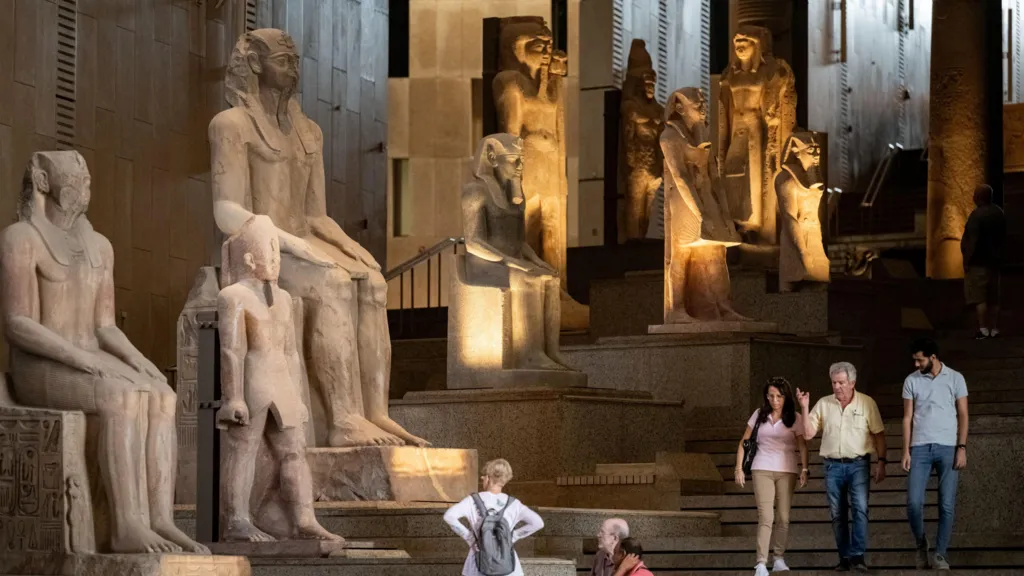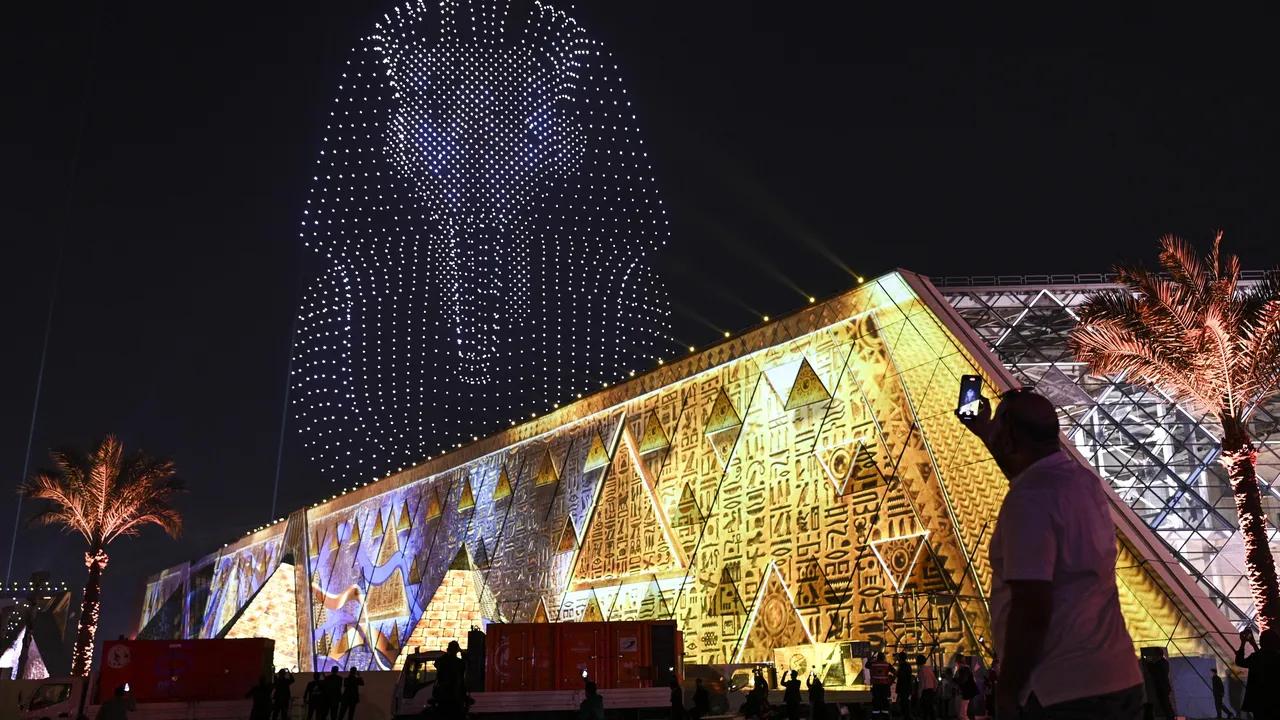Right beside the Great Pyramid of Giza — one of the Seven Wonders of the Ancient World — Egypt has unveiled The Grand Egyptian Museum (GEM).
It hopes the museum will be a modern marvel of its own.
Touted as the world’s largest archaeological museum, the $1.2 billion complex houses over 100,000 artefacts.
These span 7,000 years of Egyptian history — from the dawn of the pharaohs to the Roman era.
The crown jewel? The complete tomb of Tutankhamun, displayed in its entirety for the first time since Howard Carter’s discovery in 1922.
“I wanted visitors to experience what Carter saw a century ago — the full tomb, nothing left in storage,” explained Dr. Tarek Tawfik, former head of the GEM.
Calls For Artifact Returns
The museum’s grand staircase is lined with ancient kings and a suspended obelisk of Ramesses II.
It offers panoramic pyramid views, making it a sight as monumental as the history it holds.

Locals say it could revive Egypt’s tourism industry — and maybe even spark a new golden age of Egyptology.
But the museum also reignites an old debate.
The return of Egyptian treasures like the Rosetta Stone, the Dendera Zodiac, and Nefertiti’s bust from Western museums.
As famed archaeologist Dr. Zahi Hawass puts it, “Egypt gave the world many gifts. It’s time we got a few back.”





